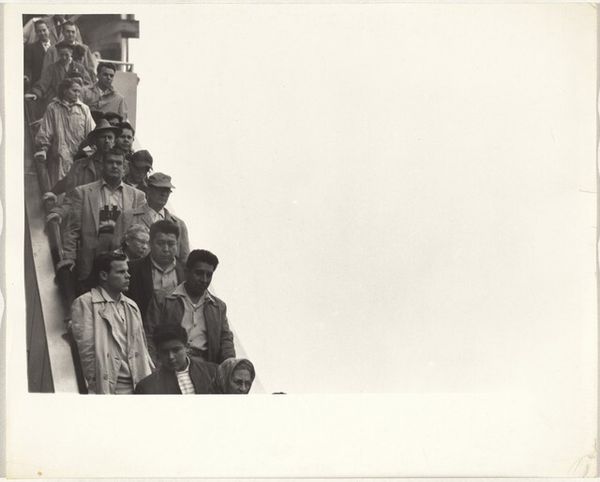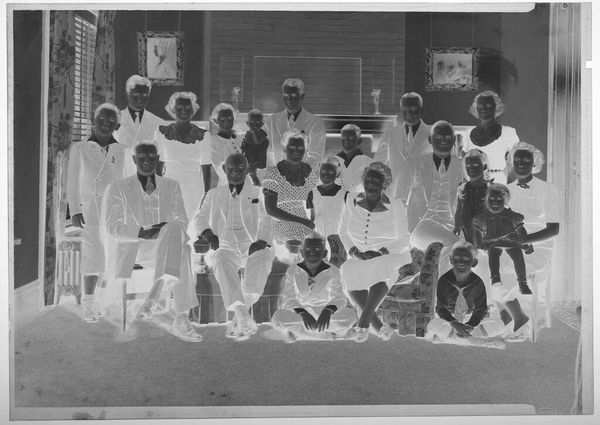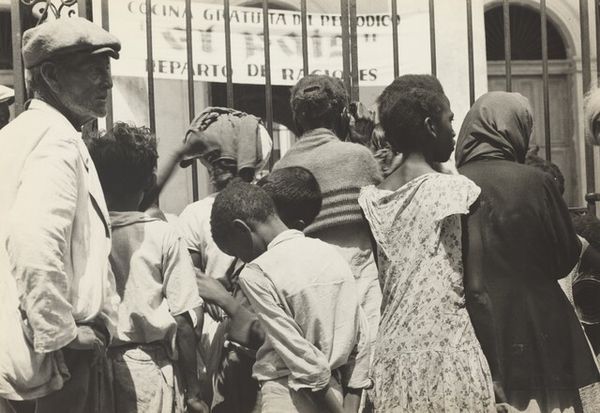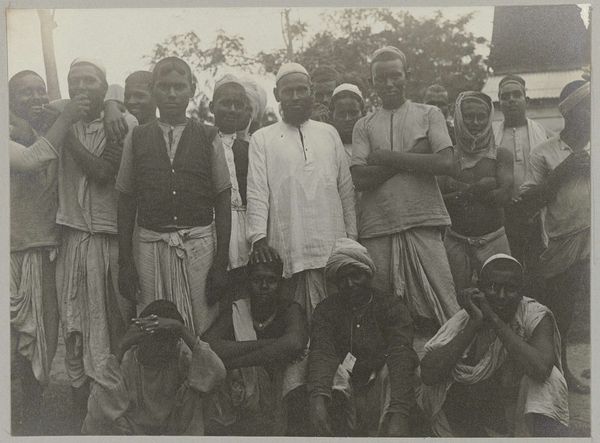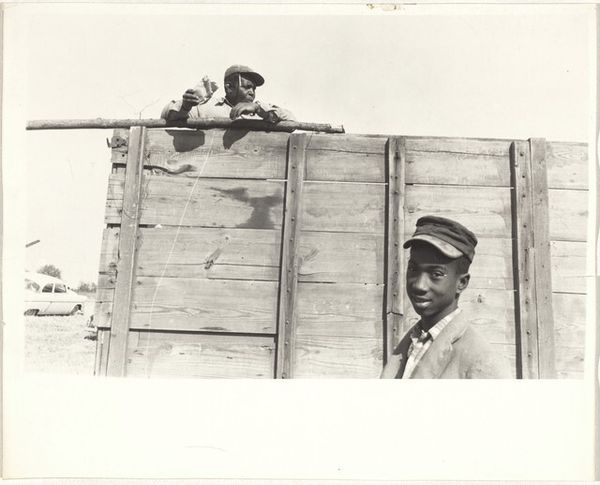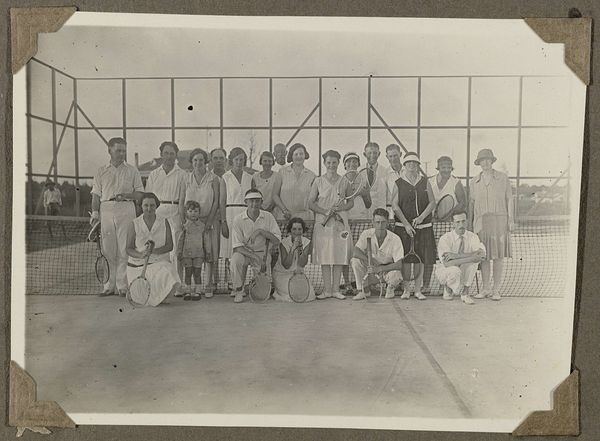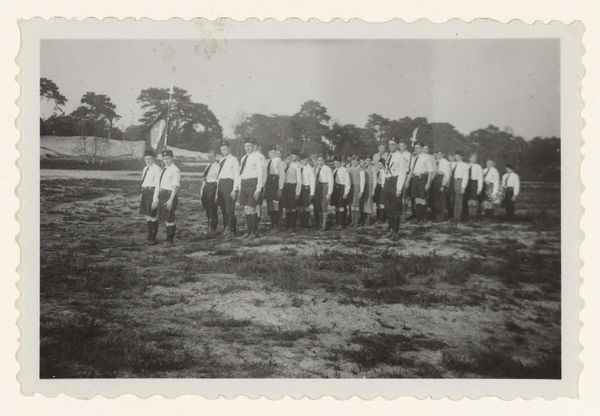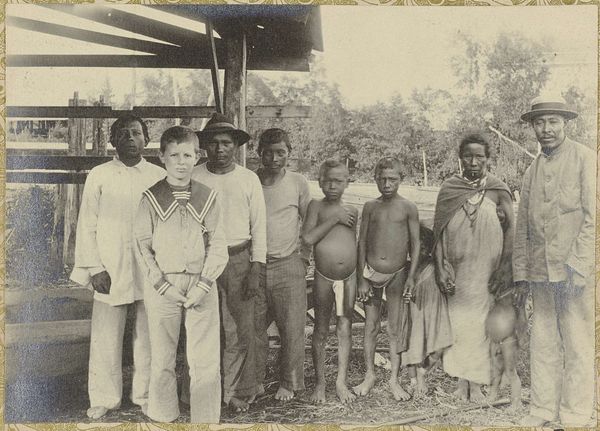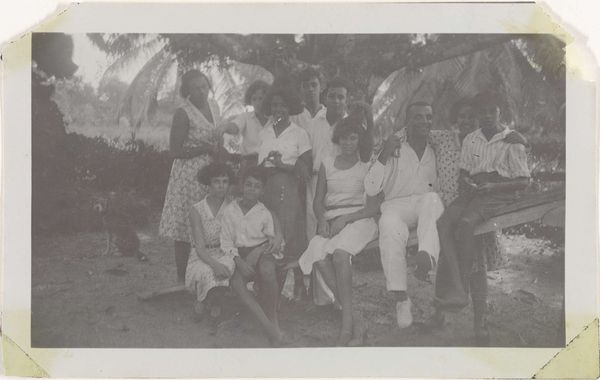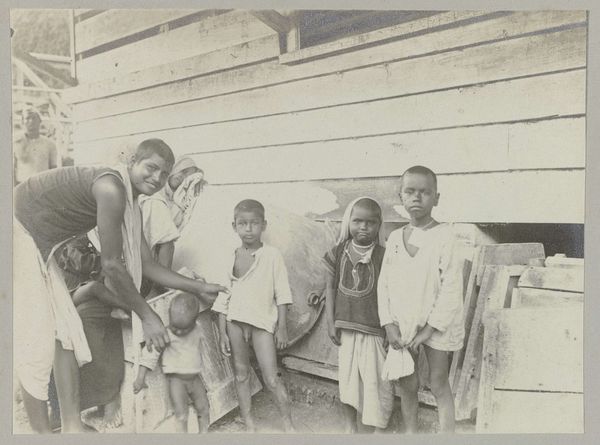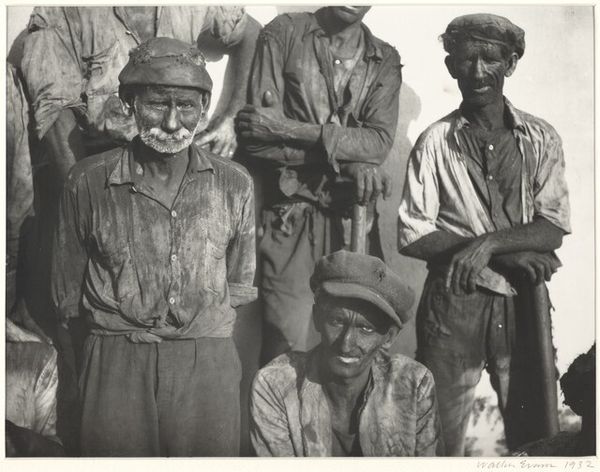
Dimensions: sheet: 20.2 x 25.2 cm (7 15/16 x 9 15/16 in.)
Copyright: National Gallery of Art: CC0 1.0
Editor: So here we have Robert Frank's "Children in Line - San Francisco" from 1956, a gelatin silver print. The first thing that strikes me is how the children, seemingly of diverse backgrounds, are physically pressed together, waiting... It feels incredibly loaded. What can you tell me about this work? Curator: Well, consider the physical act of producing this print, the labor involved. Frank wasn't just documenting; he was participating in a visual economy. How does the mass production of images like this affect their value, and more importantly, our perception of the subjects depicted? Notice the graininess, a direct result of his photographic process and printing. It adds a layer of grit, disrupting any idealized notion of childhood. How do those material elements change your understanding? Editor: I see what you mean. The grittiness brings a sense of realism and that clashes with my first impulse, which was to see them all innocent. Does the medium of photography and print become a lens to observe inequality? Curator: Exactly! The very act of framing these children, processing the film, and printing it for mass consumption transforms their lived experiences into a commodity. The clothing—some kids are wearing well-pressed suits while others look more casual in older hand-me-downs—these material disparities, amplified through Frank's photographic labor, speaks volumes about consumption patterns and social mobility. Where are these photographs shown, consumed? Editor: That's really impactful. So by analyzing the material aspects – the print itself, the clothing shown – we can unpack social narratives woven into the photograph. It’s more than just an image; it's an artifact of a specific time and place. Curator: Precisely. Thinking about art through its material conditions allows us to see beyond aesthetics and consider the complex power dynamics inherent in its creation and circulation. Editor: I never thought of it that way, but understanding the process, the choices in materials and dissemination, completely shifts my perspective. Curator: Hopefully it will lead you to more interesting conversations!
Comments
No comments
Be the first to comment and join the conversation on the ultimate creative platform.
